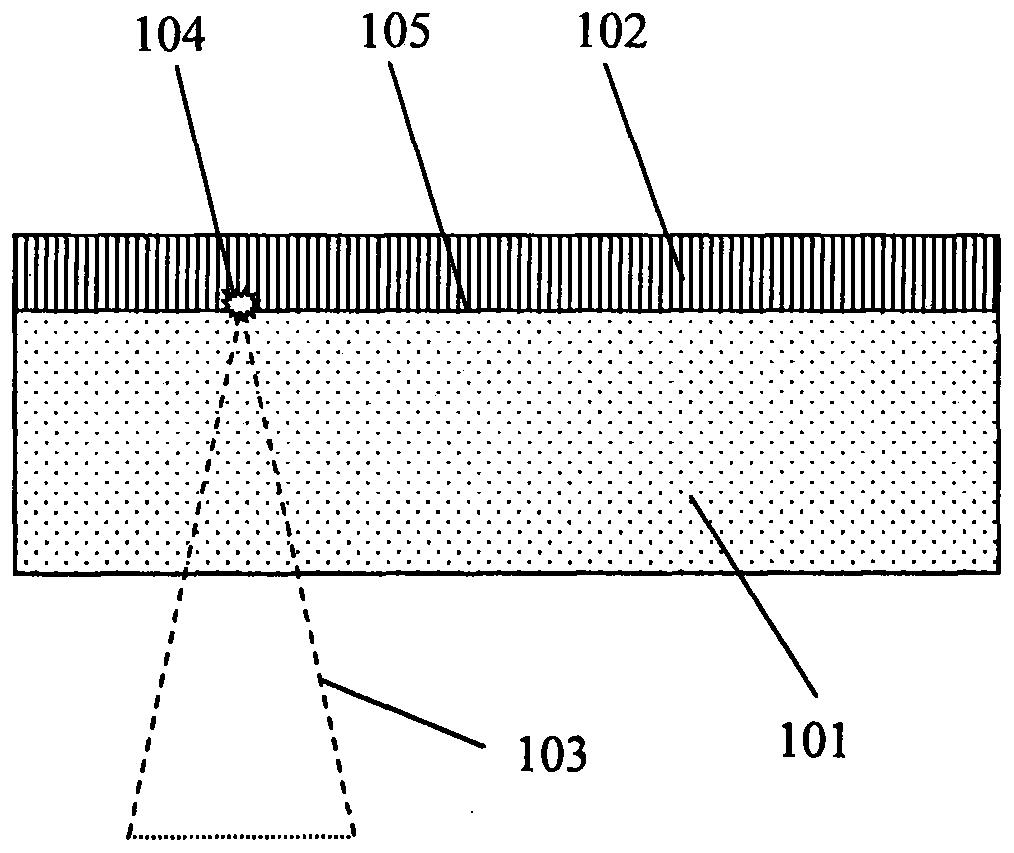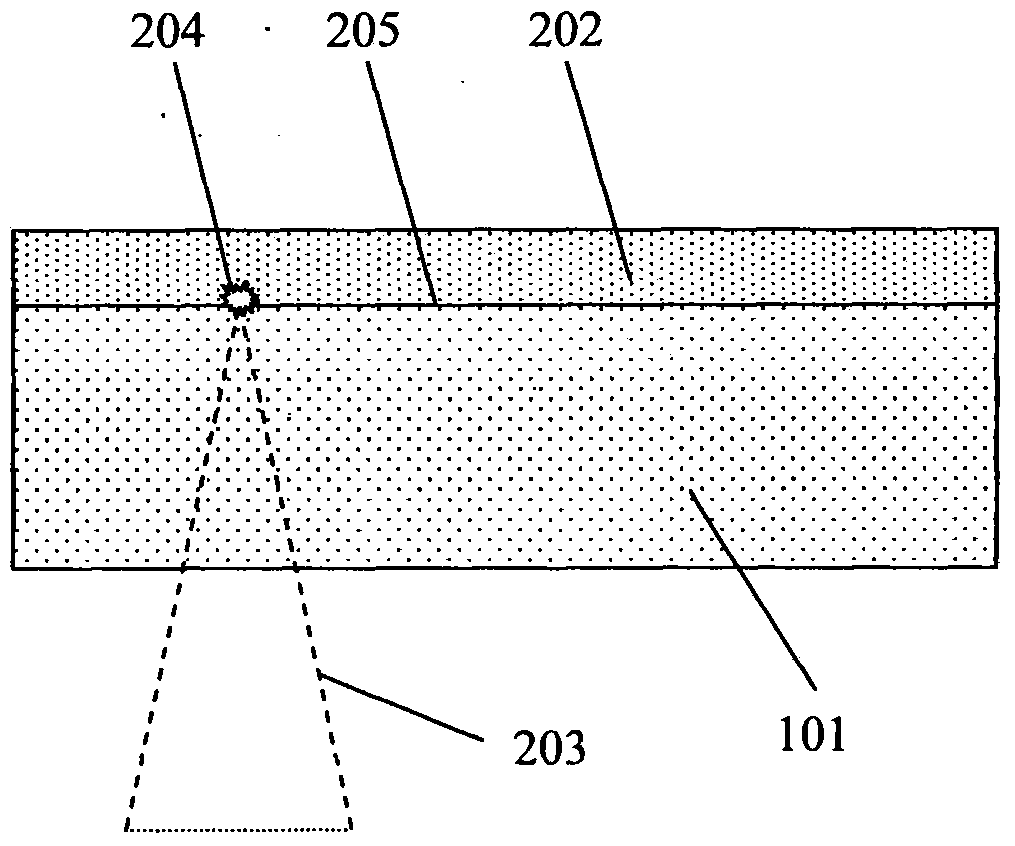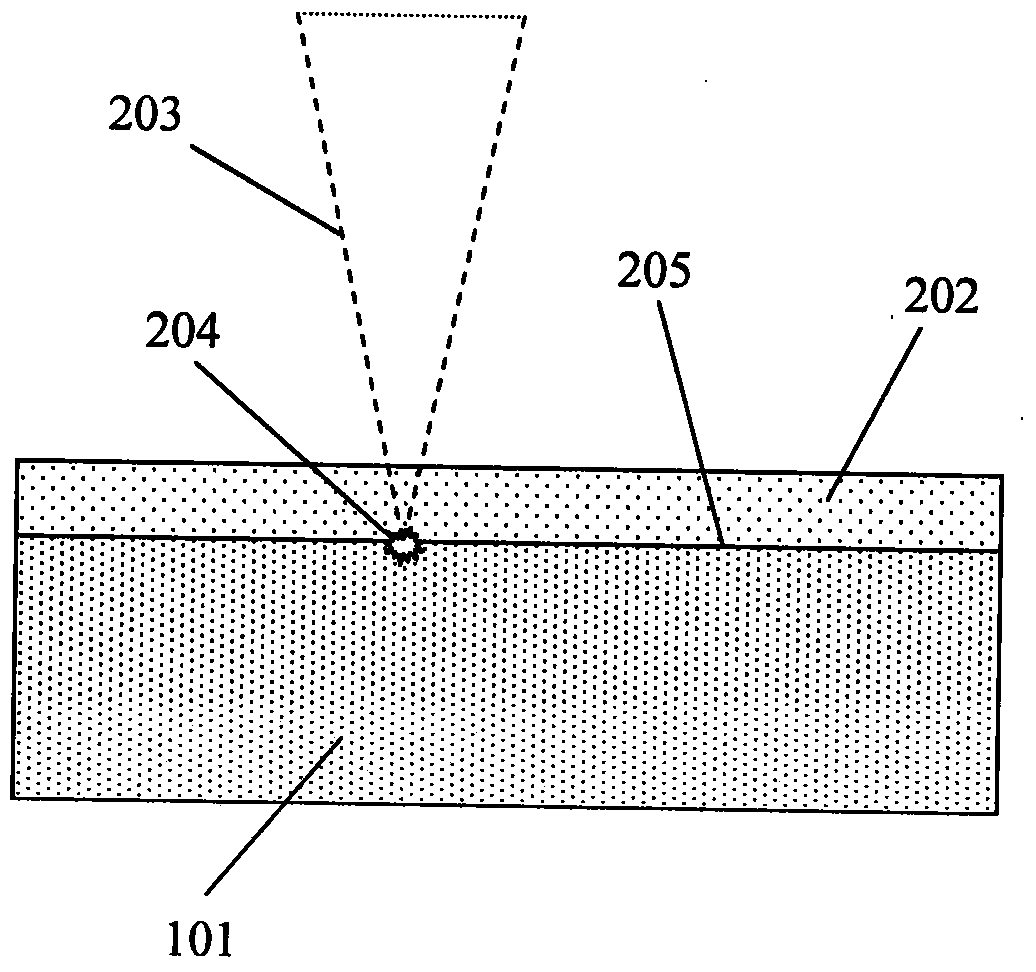Method of laser separation of the epitaxial film or of the epitaxial film layer from the growth substrate of the epitaxial semiconductor structure (variations)
A technology of epitaxial structure and growth substrate, which is applied in the field of laser processing and can solve problems such as inapplicability
- Summary
- Abstract
- Description
- Claims
- Application Information
AI Technical Summary
Problems solved by technology
Method used
Image
Examples
Embodiment 1
[0033] Example 1. A homoepitaxial gallium nitride film doped with a fine donor impurity is separated from an undoped semiconductor gallium nitride substrate by passing a laser beam through the substrate.
[0034] figure 2 A scheme for laser separation of a homoepitaxial GaN film 202 (50 μm wide) from a semiconductor GaN substrate 101 (200 μm wide) is shown. The doping level of fine silicon donor impurities in the homoepitaxial film 202 is 5×10 19 cm -3 , and greater than fine oxygen and silicon donors equal to 10 in the semiconductor substrate 101 17 cm -3 background density.
[0035] To separate homoepitaxial GaN films, CO 2 Pulse pumped laser, operating at wavelength λ = 10.6 μm and generating pulses with energy 0.1 J, duration 50 ns and repetition rate 100 Hz.
[0036] Laser radiation having a wavelength λ=10 μm at a concentration of 5×10 19 cm -3 The absorption coefficient in the fine silicon donor impurity-doped homoepitaxial GaN film 202 is equal to 4×10 4 cm ...
Embodiment 2
[0039] Example 2. Separation of an undoped homoepitaxial gallium nitride film from a semiconductor gallium nitride substrate doped with fine donor impurities by means of a laser beam passing through the homoepitaxial film.
[0040] image 3 A scheme for laser separation of an undoped 100 μm thick homoepitaxial GaN film from a 1 mm thick semiconducting GaN substrate is shown. The background concentration of fine oxygen and silicon donors in the homoepitaxial film 202 is 10 17 cm -3 and substantially less than the concentration of fine silicon donor impurities in the doped semiconductor substrate 101 (equal to 5×10 19 cm -3 ).
[0041] To separate homoepitaxial GaN films, CO 2 A pulsed pump laser operating at wavelength λ=10.6 μm and generating pulses of energy 0.1 J, duration 50 ns and repetition rate 100 Hz. Laser radiation having a wavelength λ=10 μm at a wavelength equal to 10 17 cm -3 The absorption coefficient of the undoped homoepitaxial GaN film 202 at a backgrou...
Embodiment 3
[0044] Example 3. Separation of the undoped upper layer of a homoepitaxial GaN film from an undoped semiconductor GaN substrate, where a laser beam passes through the substrate and is absorbed into the homoepitaxial layer doped with fine donor impurities. lower layer of the membrane. Figure 4 A scheme is shown for laser separation of a 50 μm thick undoped homoepitaxial GaN film 202 from a 200 μm thick undoped semiconductor GaN substrate 101 using a doped underlayer 406 of a 1 μm thick homoepitaxial film . The doping level of the fine silicon donor impurity in the lower layer 406 of the homoepitaxial GaN film is 5×10 19 cm -3 And greater than the background concentration of fine silicon and oxygen donor impurities in the semiconductor substrate 101 and the upper layer of the homoepitaxial film 202 (equal to 10 17 cm -3 ).
[0045] To separate homoepitaxial GaN films, CO 2 A pulsed pump laser operating at wavelength λ=10.6 μm and generating pulses of energy 0.1 J, duratio...
PUM
| Property | Measurement | Unit |
|---|---|---|
| Absorption coefficient | aaaaa | aaaaa |
| Absorption coefficient | aaaaa | aaaaa |
| Absorption coefficient | aaaaa | aaaaa |
Abstract
Description
Claims
Application Information
 Login to View More
Login to View More - R&D
- Intellectual Property
- Life Sciences
- Materials
- Tech Scout
- Unparalleled Data Quality
- Higher Quality Content
- 60% Fewer Hallucinations
Browse by: Latest US Patents, China's latest patents, Technical Efficacy Thesaurus, Application Domain, Technology Topic, Popular Technical Reports.
© 2025 PatSnap. All rights reserved.Legal|Privacy policy|Modern Slavery Act Transparency Statement|Sitemap|About US| Contact US: help@patsnap.com



